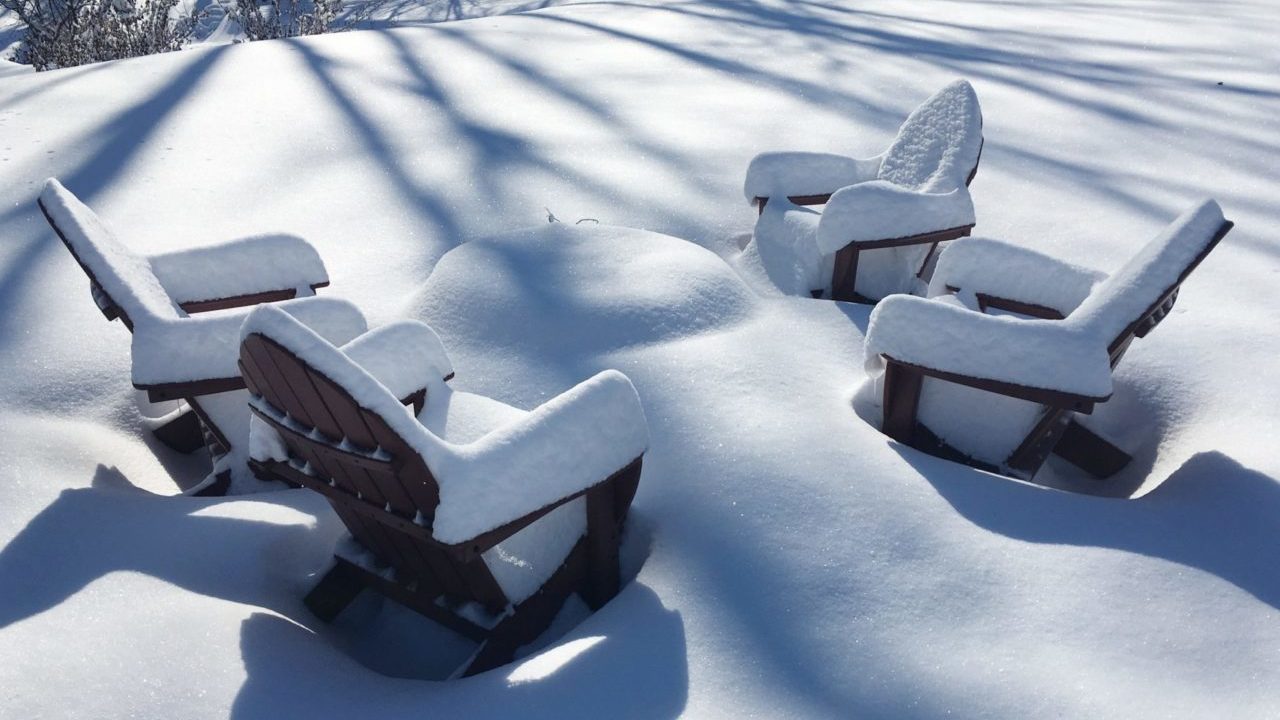How to Store Outdoor Furniture for Winter
How to Store Outdoor Furniture for Winter


Preparing your outdoor furniture for winter is one of the best ways to protect your investment and keep it looking its best for years to come. Without proper care, cold weather, snow, and ice can cause damage to cushions, rust on metal frames, and cracking in plastic. Fortunately, a few simple steps can help you extend the life of your patio furniture and make spring setup easy.
Here’s how to store outdoor furniture the right way—plus how to avoid seasonal storage altogether with winter-proof pieces from By the Yard.
1. Clean Your Outdoor Furniture Thoroughly
Before storing patio furniture, give each piece a full cleaning to remove dirt, grime, pollen, and other buildup. This prevents mold and staining during the winter months and ensures your furniture stays in great condition while in storage.
Cleaning tips by material:
- Plastic and metal frames: Wipe with a damp cloth and mild soap. Rinse and dry thoroughly to prevent rust.
- Wood furniture: Use a soft brush and wood-safe cleaner. Avoid power washing, which can damage the surface.
- Fabric cushions: Spot-clean stains and allow to dry completely before storing.
Never skip drying. Moisture is the enemy of stored outdoor furniture, leading to mold, mildew, and rot over time.
2. Store Outdoor Cushions and Fabrics Indoors
Cushions, hammocks, and fabric-covered furniture need special attention. Always store outdoor cushions in a dry, temperature-controlled area like a closet, basement, or attic. Exposure to sunlight can cause fading, while snow and moisture can lead to mold.
Use breathable storage bags or plastic bins with secure lids to keep out pests and dust. Avoid storing fabric near drafty windows, damp walls, or areas prone to leaks.
3. Protect Furniture from Harsh Winter Conditions
If you plan to leave furniture outside during the winter, proper covering is key. Use heavy-duty vinyl furniture covers or breathable tarps secured with ties or clips. Covers should fit snugly but allow air circulation to prevent condensation buildup.
Best practices by material:
- Plastic furniture: Should be stored indoors if possible. Cold temperatures can cause cracking and brittleness.
- Metal furniture: Cover with weather-resistant material to reduce rust risk.
- HDPE furniture: Can safely remain outdoors all winter. It resists moisture, temperature swings, and UV rays without degrading.
If space allows, moving furniture into a garage, shed, or enclosed patio will offer the most protection for less durable pieces.
4. Choose Maintenance-Free Furniture That Doesn’t Need Storage
Want to skip the hassle of winter prep? Invest in maintenance-free patio furniture made from HDPE (high-density polyethylene). This durable material is designed to withstand Minnesota winters with no need for covering or indoor storage.
HDPE furniture is:
- Water-resistant
- UV-stabilized to prevent fading
- Crack-proof in cold temperatures
- Easy to clean and care for year-round
With By the Yard’s furniture, you can leave your setup outside—even during the harshest Midwest winters—and enjoy it again in spring without lifting a finger.
Upgrade to Winter-Proof Outdoor Furniture from By the Yard
Taking care of your furniture each fall helps protect it from damage and extends its lifespan. But with By the Yard’s premium HDPE outdoor furniture, winter storage becomes optional. Our chairs, tables, and benches are built to last through every season and backed by a 35-year warranty.
Stop worrying about winter damage. Shop our collection of durable, weather-resistant patio furniture online or visit a local showroom. This fall, protect your outdoor space with furniture designed to last—no storage required.
